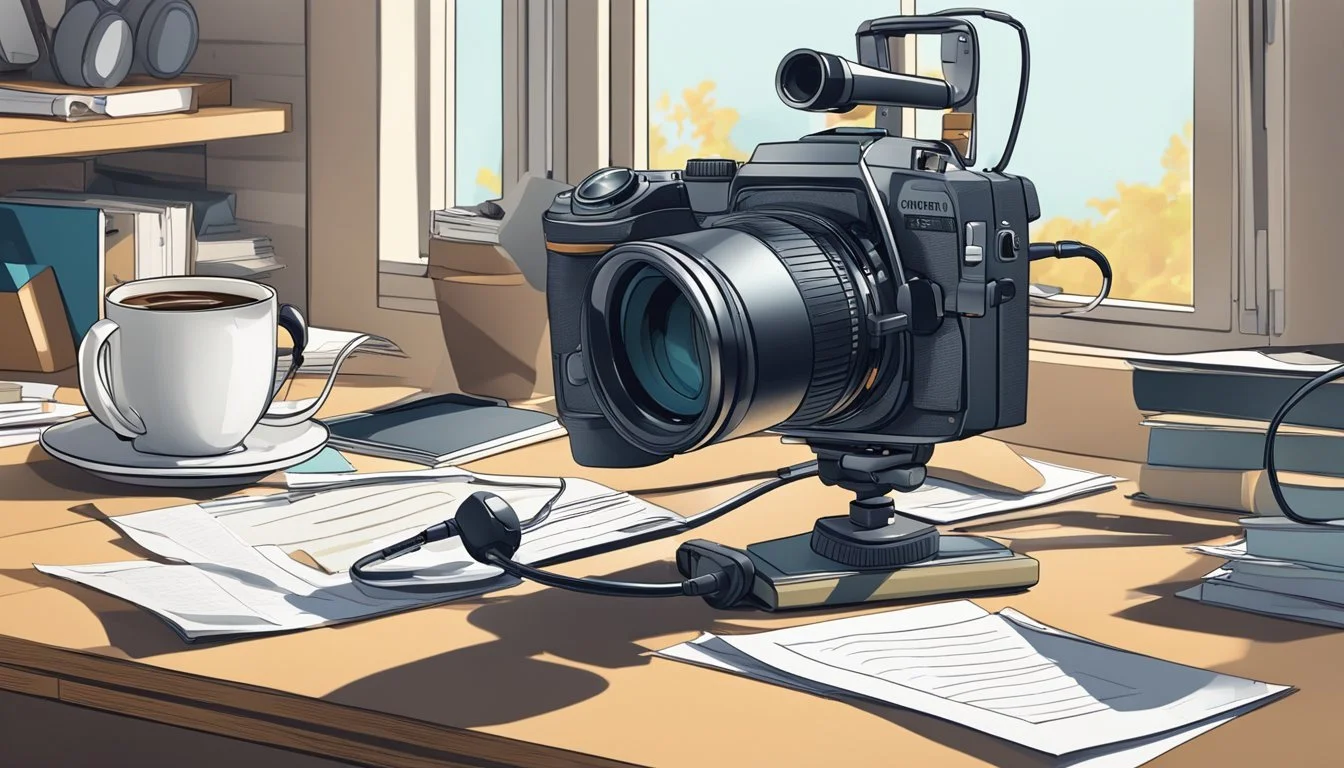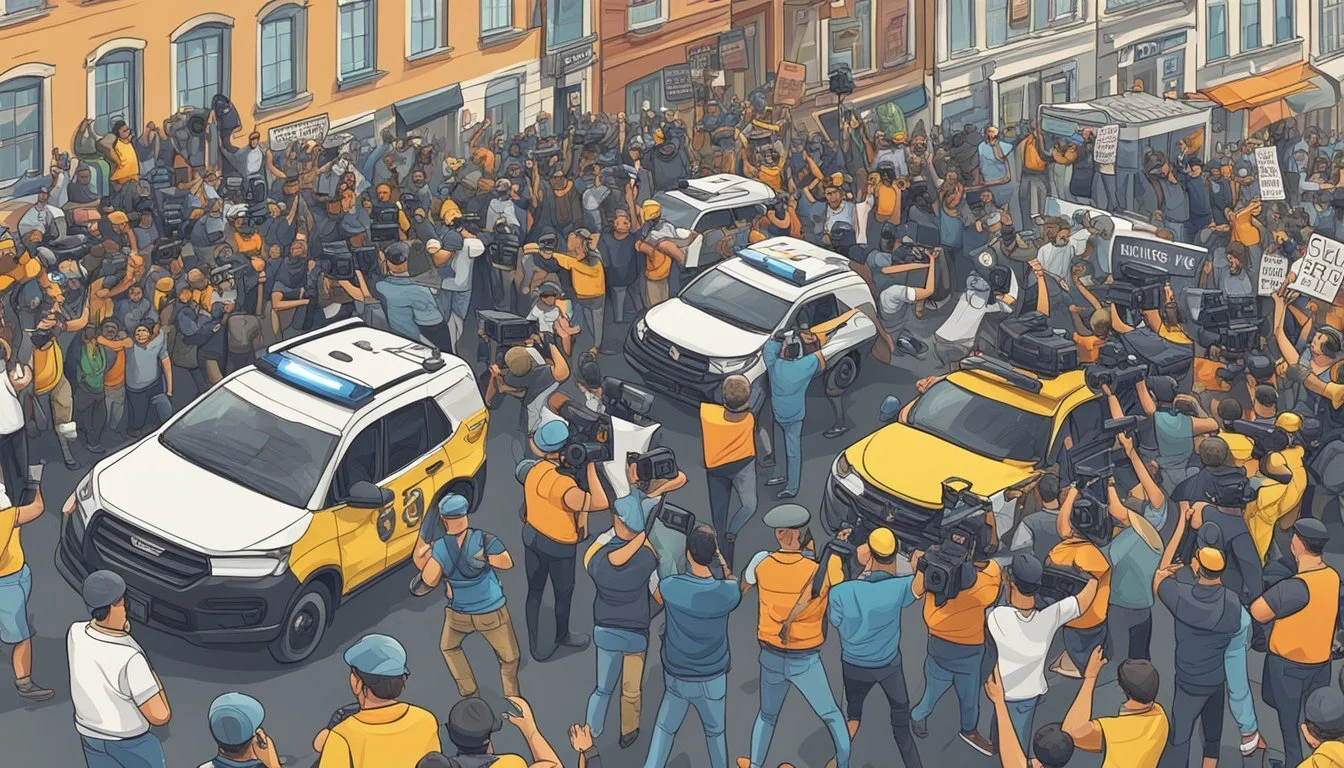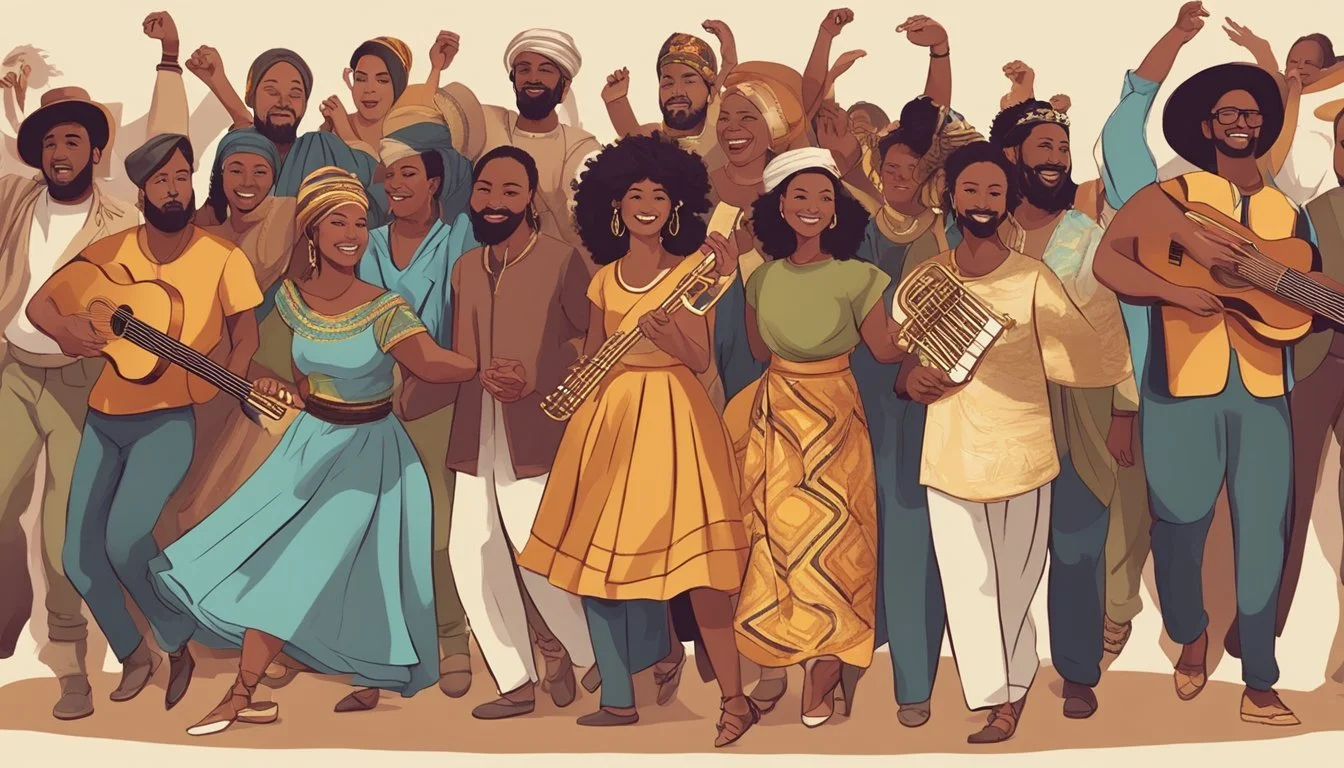Beyond Reality: How Mock Documentaries Turn Fiction into Hilarious Truths!
Mockumentaries blend fiction with documentary-style filmmaking, creating a unique genre that entertains and often satirizes. These productions mimic the aesthetics and techniques of traditional documentaries while presenting fictional stories or events. Mockumentaries use documentary conventions to create a sense of authenticity, allowing viewers to suspend disbelief and engage with the fictional narrative as if it were real.
The term "mockumentary" gained popularity in the mid-1990s, though the concept has been around since the 1960s. Films like "This Is Spinal Tap" (1984) helped establish the genre, paving the way for future productions in both film and television. Mockumentaries can cover a wide range of subjects, from music and sports to politics and everyday life.
These faux documentaries serve various purposes, including social commentary, humor, and critique of media conventions. By adopting the documentary format, mockumentaries can explore topics in ways that traditional fictional narratives might not, offering fresh perspectives and insights. The genre continues to evolve, with new productions pushing creative boundaries and challenging audience expectations.
History and Evolution of Mock Documentary
Mock documentaries emerged as a unique film genre, blending fictional narratives with documentary-style techniques. This innovative format has roots in early cinema and has evolved significantly over the decades.
Early Instances and Influences
The origins of mock documentaries can be traced back to the early 20th century. Georges Méliès' 1899 film "The Dreyfus Affair" is considered one of the earliest examples, recreating newsreel-style footage of real events.
Orson Welles' 1938 radio broadcast of "The War of the Worlds" marked a significant milestone. It convincingly mimicked a news report of an alien invasion, causing widespread panic among listeners.
In the 1960s, Woody Allen pioneered the mockumentary genre in cinema. His 1969 film "Take the Money and Run" used documentary techniques to tell a fictional story, setting the stage for future mockumentaries.
Rise of Popularity in the Late 20th Century
The 1980s and 1990s saw a surge in mockumentary popularity. Rob Reiner's "This Is Spinal Tap" (1984) became a cult classic, parodying rock documentaries with its fictional heavy metal band.
Woody Allen's "Zelig" (1983) pushed the boundaries further. It seamlessly integrated its fictional protagonist into historical footage, creating a believable alternate history.
Television embraced the format with shows like "The Office" (UK, 2001). These series used documentary-style filming to enhance realism and comedy in fictional workplace settings.
Modern Day Mockumentaries and Their Impact
Contemporary mockumentaries have diversified in style and subject matter. Films like "Borat" (2006) blend scripted scenes with real-world interactions, creating a unique form of social commentary.
Streaming platforms have fueled a resurgence in mockumentary series. Shows like "What We Do in the Shadows" (2019) use the format to explore supernatural themes with humor.
Mockumentaries continue to serve as powerful tools for satire and social critique. They challenge viewers' perceptions of reality and media representation, often addressing serious topics through a comedic lens.
Defining the Genre
Mock documentaries blend fictional narratives with documentary filmmaking techniques. This genre plays with audience expectations by presenting fabricated stories in a realistic style.
Characteristics of Mock Documentaries
Mock documentaries, also known as mockumentaries, mimic the aesthetics of traditional documentaries. They often feature:
• Hand-held camera work • Interviews with fictional subjects • Archival footage (real or fabricated) • Voice-over narration
These elements create an illusion of authenticity. Mock documentaries may use humor, satire, or dramatic storytelling to engage viewers.
Comparison with Traditional Documentaries
Unlike genuine documentaries, mock documentaries present fictional events. Key differences include:
• Scripted content vs. real-life footage • Actors portraying characters vs. real people • Fictional narratives vs. factual accounts
Both genres use similar visual styles and editing techniques. This intentional blurring of lines challenges viewers to question media authenticity.
Subgenres Within Mock Documentaries
Mock documentaries encompass various subgenres:
Comedic mockumentaries (e.g., "This Is Spinal Tap")
Horror mockumentaries (e.g., "The Blair Witch Project")
Satirical mockumentaries (e.g., "Drop Dead Gorgeous")
Pseudo-documentaries and docufiction fall under the broader mockumentary umbrella. These subgenres may focus on different themes or employ unique storytelling approaches while maintaining the documentary-style presentation.
Notable Directors and Creators
The mock documentary genre has been shaped by visionary filmmakers who pushed boundaries and created influential works. Their contributions have elevated mockumentaries from niche experiments to mainstream success.
Pioneers of the Mock Documentary Style
Rob Reiner directed the groundbreaking "This Is Spinal Tap" in 1984, setting the standard for rock mockumentaries. The film's improvised dialogue and deadpan humor influenced countless later works.
Christopher Guest, who starred in "Spinal Tap," went on to direct mock documentaries like "Waiting for Guffman" and "Best in Show." His ensemble-based approach and focus on quirky subcultures became hallmarks of the genre.
Eugene Levy frequently collaborated with Guest, co-writing and starring in several of his films. Levy's comedic talents and ability to inhabit eccentric characters proved essential to the mockumentary formula.
Contemporary Filmmakers and Their Contributions
Sacha Baron Cohen revolutionized the form with "Borat" and its sequels, blending scripted comedy with real-world interactions. His provocative approach pushed mockumentaries into new territory.
Taika Waititi and Jemaine Clement created "What We Do in the Shadows," a vampire mockumentary that spawned a successful TV series. Their dry wit and genre-bending style breathed new life into the format.
Ricky Gervais pioneered the mock-documentary sitcom with "The Office," influencing TV comedy worldwide. His cringe-inducing humor and focus on everyday workplace absurdities resonated with audiences.
These directors have expanded the mockumentary genre, using it to explore diverse subjects and push comedic boundaries. Their work continues to inspire new generations of filmmakers.
Iconic Mockumentary Films and TV Shows
Mockumentaries have become a beloved genre, blending fictional stories with documentary-style filmmaking. These works have shaped comedy and storytelling across film and television.
Cult Classics and Landmark Films
"This Is Spinal Tap" (1984) stands as a groundbreaking mockumentary, following a fictional British rock band. Its improvisational style and satirical take on rock culture influenced many future productions. Christopher Guest, a key figure in the genre, directed "Best in Show" (2000) and "A Mighty Wind" (2003), both celebrating quirky subcultures with deadpan humor.
"Borat" (2006) pushed boundaries with its mix of scripted scenes and real-world interactions. The film's cultural impact was significant, sparking discussions on satire and social commentary. "What We Do in the Shadows" (2014) brought fresh energy to the genre, applying mockumentary techniques to vampire lore.
Mockumentary Series and Miniseries
Television embraced the mockumentary format, with "The Office" (UK 2001, US 2005-2013) becoming a cultural phenomenon. Its documentary-style approach to workplace comedy inspired numerous imitators. "Parks and Recreation" (2009-2015) applied a similar formula to local government, creating memorable characters and situations.
"Modern Family" (2009-2020) used the mockumentary style to explore family dynamics, earning critical acclaim and a devoted fanbase. "Documentary Now!" (2015-present) pays homage to classic documentaries through parody, showcasing the versatility of the format.
Impact on Reality Television
Mockumentaries have blurred lines between fiction and reality, influencing reality TV production. Shows like "Trailer Park Boys" (2001-2018) adopted a pseudo-documentary style, creating a sense of authenticity in fictional settings. This approach has become common in reality TV, with producers using similar techniques to enhance drama and viewer engagement.
The mockumentary format has also inspired reality show confessionals and "talking head" interviews. These elements, now staples of reality programming, originated from mockumentary conventions. The genre's influence extends to editing techniques and camera work, shaping how reality content is presented to audiences.
Thematic Elements and Techniques
Mockumentaries employ specific thematic elements and techniques to create their unique blend of fiction and realism. These approaches allow filmmakers to craft compelling narratives that both entertain and provoke thought.
Satirical Elements and Social Commentary
Mockumentaries often use satire to critique social, political, or cultural issues. They exaggerate real-life situations to highlight absurdities or flaws in society. This technique allows filmmakers to address serious topics in a humorous and accessible way.
Satirical elements can include:
Exaggerated stereotypes
Absurd situations based on real events
Ironic juxtapositions of fact and fiction
Many mockumentaries tackle controversial subjects, using humor to disarm viewers and encourage critical thinking. By presenting familiar documentary formats with unexpected twists, these films challenge audiences to question their assumptions about media and reality.
Use of Improvisation in Mockumentaries
Improvisation plays a crucial role in creating authentic performances in mockumentaries. Actors often work from loose outlines rather than scripted dialogue, allowing for spontaneous and natural interactions.
Key aspects of improvisation in mockumentaries:
Actors respond in real-time to unexpected situations
Characters develop organically through improvised scenes
Dialogue feels more genuine and less rehearsed
This approach helps maintain the illusion of reality, as improvised performances closely mimic the unpredictable nature of real-life interactions. It also allows for unexpected moments of humor and insight that can enhance the overall narrative.
Found Footage and Faux Realism
Mockumentaries frequently incorporate found footage techniques to enhance their sense of authenticity. This approach mimics the visual style of real documentaries and news reports.
Common found footage techniques include:
Shaky handheld camera work
Low-quality video or film stock
Imperfect lighting and sound
These elements create a raw, unpolished look that reinforces the illusion of capturing real events. Mockumentaries may also use on-screen text, voice-overs, and interviews to further emulate documentary conventions.
By blending these techniques with fictional narratives, mockumentaries blur the line between reality and fiction. This approach challenges viewers to critically examine the media they consume and question the authenticity of presented information.
Cultural Impact and Legacy
Mock documentaries have profoundly shaped media and society. They've influenced popular culture, served as tools for social critique, and expanded the boundaries of documentary filmmaking.
Influence on Pop Culture
Mock documentaries have permeated various aspects of entertainment. The Beatles-inspired film "The Rutles: All You Need Is Cash" parodied rock band documentaries, gaining a cult following. TV shows like "The Office" adopted the mockumentary format, popularizing it for mainstream audiences. Even dog shows became subjects of parody in Christopher Guest's "Best in Show," highlighting the genre's versatility.
These productions have blurred the lines between fact and fiction, encouraging viewers to question the authenticity of media content. Their impact extends to social media, where mockumentary-style content often goes viral, demonstrating the format's enduring appeal in the digital age.
Mockumentaries as a Tool for Critique
Filmmakers have utilized mock documentaries to address serious social and political issues. By presenting fictional narratives as documentaries, these films encourage viewers to question media reliability and reality construction. "What We Do in the Shadows" uses vampires as a metaphor to explore immigrant experiences and cultural assimilation.
Mock documentaries often tackle taboo subjects or satirize real-life events, providing a unique platform for social commentary. They can highlight societal flaws, challenge prevailing narratives, and provoke critical thinking among audiences. This approach allows for nuanced discussions of complex topics in an engaging, accessible format.
Contributions to Documentary Filmmaking
Mock documentaries have pushed the boundaries of traditional documentary techniques. They've introduced innovative storytelling methods, blending fact and fiction to create compelling narratives. This hybridization has influenced authentic documentaries, encouraging more creative approaches to presenting information.
The genre has also raised important questions about objectivity in documentary filmmaking. By mimicking documentary conventions, mock documentaries have prompted viewers to scrutinize the truthfulness of all media content. This critical approach has led to more transparency in documentary production and a greater emphasis on fact-checking in journalism.
Mock documentaries have expanded the visual language of documentaries, incorporating elements like staged interviews and recreated footage. These techniques have been adopted by some traditional documentarians, enriching the overall landscape of non-fiction filmmaking.
Critical Reception and Analysis
Mockumentaries have garnered significant attention from academics, film critics, and audiences alike. Their unique blend of fiction and documentary techniques has sparked debates about authenticity, satire, and genre conventions.
Academic Perspectives on the Mockumentary Genre
Film scholars have examined mockumentaries as a subversive form that challenges traditional documentary conventions. The genre often satirizes real-world events or institutions, using familiar documentary techniques to create a sense of authenticity.
Academics analyze how mockumentaries blur the lines between fact and fiction, questioning the notion of objective truth in documentary filmmaking. Some researchers focus on the genre's ability to critique media representation and audience gullibility.
The War of the Worlds radio broadcast in 1938 is frequently cited as an early precursor to modern mockumentaries, demonstrating the power of realistic fiction to influence public perception.
Mockumentaries in Film Studies
Film studies programs increasingly include mockumentaries in their curricula, recognizing the genre's importance in contemporary cinema. Students examine the technical aspects of creating a convincing fake documentary, including camera techniques, editing styles, and narrative structures.
Mockumentaries are often studied alongside traditional documentaries, highlighting the similarities and differences between the two forms. This comparison allows for a deeper understanding of documentary conventions and how they can be manipulated for comedic or satirical effect.
Case studies of influential mockumentaries like "This Is Spinal Tap" or "The Office" are common in film studies courses, exploring their impact on popular culture and subsequent filmmaking.
Audience Reception and Fandom
Mockumentaries have developed a dedicated fan base, with audiences appreciating their clever subversion of expectations. Some viewers enjoy the challenge of distinguishing fact from fiction, while others simply appreciate the comedic elements.
Online communities have formed around popular mockumentaries, dissecting their details and sharing theories about hidden meanings or references. These fan discussions often contribute to the ongoing critical analysis of the genre.
The reception of mockumentaries can vary widely, with some viewers being fooled by particularly convincing examples. This potential for misinterpretation has led to debates about the ethical implications of the genre and its impact on media literacy.
Challenges and Controversies
Mock documentaries face ethical dilemmas and can potentially spread misinformation. These issues raise important questions about the genre's impact and responsibilities.
Ethical Considerations in Mock Documentaries
Mock documentaries often blur the line between fact and fiction, creating ethical challenges. Filmmakers must carefully navigate the use of real-world elements and fictional narratives.
Some productions have faced criticism for misleading audiences or exploiting real events. The 2012 film "The Imposter" sparked debate by recreating true events with actors.
Consent and representation are key concerns. Mock documentaries risk misrepresenting individuals or groups without their input or approval.
Filmmakers must balance creative expression with ethical storytelling. This includes clearly disclosing the fictional nature of their work to viewers.
Misinformation and Public Perception
Mock documentaries can unintentionally spread false information. Some viewers may mistake fictional elements for facts, leading to misconceptions.
Social media amplifies this risk, as clips or claims from fake documentaries can circulate out of context. This poses challenges for combating online misinformation.
High-quality production values in mock documentaries can make them appear authentic. This realism may lead viewers to question legitimate documentaries.
Media literacy education is crucial to help audiences distinguish between fact and fiction. Viewers need tools to critically analyze documentary-style content.
Filmmakers face pressure to clarify their work's fictional status. Some use disclaimers or behind-the-scenes content to provide transparency.
The Future of Mockumentaries
Mockumentaries continue to evolve, embracing new technologies and storytelling approaches. The genre adapts to changing viewer habits and emerging platforms while pushing creative boundaries.
Technological Advancements and New Platforms
Virtual reality and augmented reality offer exciting possibilities for immersive mockumentary experiences. Filmmakers can create interactive narratives that blur the line between fiction and reality even further. Social media platforms provide unique opportunities for mockumentary storytelling, with creators developing fictional characters and storylines that unfold in real-time across multiple accounts.
Streaming services are investing in original mockumentary content, attracting top talent and providing bigger budgets. This allows for more ambitious productions with higher production values. AI and deepfake technology may play a role in future mockumentaries, raising ethical questions about authenticity and viewer trust.
Evolving Narratives and Audience Expectations
Mockumentaries are likely to tackle more complex and nuanced topics as audiences become more sophisticated. Climate change, artificial intelligence, and space exploration could serve as compelling backdrops for future productions. The found-footage subgenre may experience a resurgence, incorporating elements from vlogs, livestreams, and surveillance footage.
Audiences increasingly expect mockumentaries to offer insightful commentary on current events and social issues. This trend could lead to more politically charged and provocative content. Cross-platform storytelling may become more prevalent, with mockumentary narratives extending beyond traditional film and TV formats into podcasts, social media, and interactive experiences.








